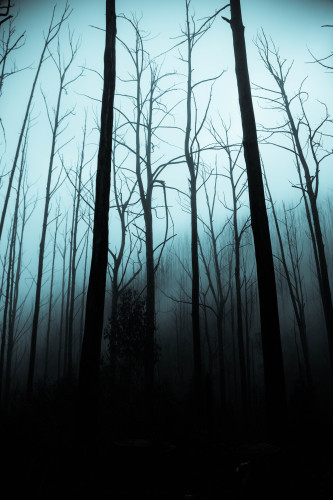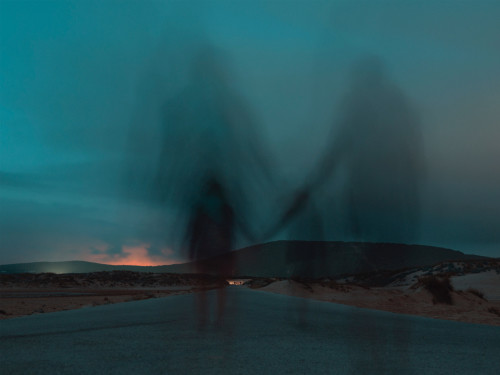What Are Ghosts?
Are they the benevolent spirits of our loved ones who have passed on? Or are they malevolent specters haunting the shadows, waiting for the moment to attack unwitting victims? Modern folklore says that ghosts are the souls or spirits of a dead person or animal that can often be perceived by the living. These apparitions vary widely in descriptions, whether they be completely disembodied sounds, translucent forms of a person who has passed, or wisps, orbs, shapes, and other realistic silhouettes. From firsthand experiences and stories passed down through the ages, it seems that these entities can be fully aware of their surroundings, or simply faded recordings tragically repeating moments from within their own lifetime.
There is a widespread belief in the afterlife, including the manifestation of spirits which is highly intertwined in the ancestor worship that has appeared in cultures across the world since before the written word. These beliefs have led to funeral rites, exorcisms, and attempts to contact those who have passed as a means to put the spirits of the dead to rest. Contacting those who haunt your halls can be done in a number of ways, most notably through a séance wherein participants use Ouija boards or mediums.
Disembodied spirits are identified not necessarily by their appearance as apparitions, but by the displacement of objects, strange or flickering lights, as well as an auditory presence—laughter or screams with no origin, footsteps when there is no one else around, ringing bells or other spontaneous music that comes from untouched musical instruments. Haunted locations are believed to be associated with possessing spirits who still have a strong attachment to the location from their own past, whether it be sorrow, fear, or distress due to a violent death. People can be haunted as well—not entirely unlike possession, but the person being haunted does not have their body inhabited by the spirit itself, instead, they are likely associated in some way to the unhappy experience that keeps the spirit tethered to the world of the living.
There are multiple types of spirits that are known to haunt the living, even in the modern age. First, is called the interactive personality—these are considered the most common of all and are often human in nature. Whether it’s your deceased Aunt Sally coming to tell you that she’s not happy that you took her vintage jade brooch or a person lost to history they’re not always kind apparitions. These personalities can make themselves known in a variety of different ways, whether visible or not, some can speak, make noises, touch you, or even cause odors reminiscent of when they were alive (i.e. a perfume they used to wear, or cigar smoke). Those who study and hunt for ghosts are convinced that these spirits retain their personality and can still feel the emotions that would have been relevant to them during life.
Not all of the commonly acknowledged apparitions go out of their way to communicate with people—if you’ve ever heard of the White Ladies, you know that most if not all of these women keep to themselves, by lingering mournfully in a cemetery, or an aging historical building. These White Ladies are described as being dressed entirely in white and can be heard sobbing, crying, or wailing over the painful loss that drove them to take their own lives. They’re not known to necessarily interact with their environment, so much as to be painfully aware of where they are and continue to wallow in the depth of grief that keeps them stuck where they died.
The term poltergeist would most likely conjure images of a swirling vortex and alternate dimensions resulting from disrespecting ancient burial grounds of Native Americans, but it’s not the most accurate portrayal. Poltergeist is actually one of the most common names for a ghost that can interact with their environment—except that instances of these spirits are more often associated with violent interaction with their physical environment. They can knock items off of shelves, open cabinet doors, slam doors, stack chairs, or generally displace objects from their original resting place. Not too surprisingly, poltergeists are the most terrifying because they give us the impression that if they can move things around us, then they can also take physical action upon us.
So, whether you’re experiencing unnatural phenomena throughout your house or are out hunting ghosts in an abandoned building, you may find that there are multiple types of entities that you come across. Ghosts are herein described as the spirits of people or animals that have passed away that may have an unordinary attachment to the world of the living–good or bad, it depends on the person they were in life. Due to the lack of documentation that has been proven to be authenticated, it’s unlikely that you will be able to capture viable evidence that would declare with finality that ghosts are real. It is, however, important to continue to try to document proof of the existence of ghosts, because otherwise, we may never know.

Georgia-based author and artist, Mary has been a horror aficionado since the mid-2000s. Originally a hobby artist and writer, she found her niche in the horror industry in late 2019 and hasn’t looked back since. Mary’s evolution into a horror expert allowed her to express herself truly for the first time in her life. Now, she prides herself on indulging in the stuff of nightmares.
Mary also moonlights as a content creator across multiple social media platforms—breaking down horror tropes on YouTube, as well as playing horror games and broadcasting live digital art sessions on Twitch.


